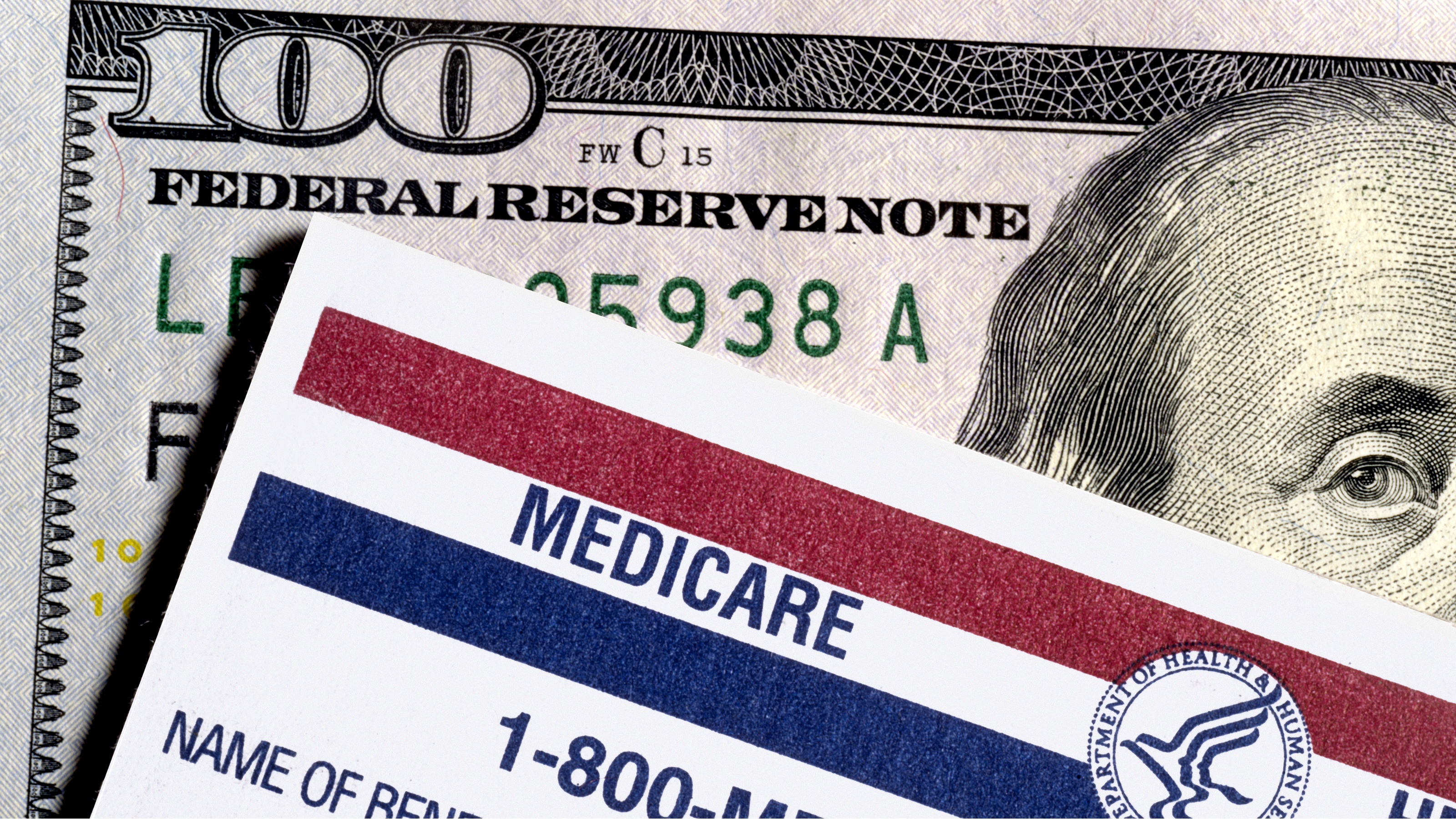Retiring Early? This Strategy Cuts Your Income Tax to Zero
When retiring early, married couples can use this little-known (and legitimate) strategy to take a six-figure income every year — tax-free.


Many Americans dream of early retirement — and a growing number are making it happen. But too often, those who retire before 65 discover they are needlessly overpaying taxes on their income.
The good news: With smart planning, married couples can legally access up to $126,700 of income each year completely tax-free. Let's explore how this works and offer a step-by-step blueprint for families aiming to retire between ages 55 and 65.
The Kiplinger Building Wealth program handpicks financial advisers and business owners from around the world to share retirement, estate planning and tax strategies to preserve and grow your wealth. These experts, who never pay for inclusion on the site, include professional wealth managers, fiduciary financial planners, CPAs and lawyers. Most of them have certifications including CFP®, ChFC®, IAR, AIF®, CDFA® and more, and their stellar records can be checked through the SEC or FINRA.

Sign up for Kiplinger’s Free E-Newsletters
Profit and prosper with the best of expert advice on investing, taxes, retirement, personal finance and more - straight to your e-mail.
Profit and prosper with the best of expert advice - straight to your e-mail.
Two key numbers for 2025
To unlock this "zero-tax" strategy, retirees must understand two important thresholds for 2025:
- $30,000: The standard deduction for married couples filing jointly
- $96,700: The top of the 0% federal long-term capital gains bracket
In combination, this allows a couple to receive $126,700 of taxable‐income cash flows — via dividends, interest and capital gains — without owing a dime of federal income tax.
Why taxable accounts matter
Most retirees focus on tax-deferred (401(k), 403(b) and IRA) accounts — but the real engine of the zero-tax strategy is taxable brokerage accounts invested in low-cost, tax-efficient funds. Here's why:
- Dividends and interest from these accounts count as ordinary income
- Long-term capital gains (on investments held at least one year) enjoy a 0% tax rate up to the threshold mentioned above
Over the six to eight years before retirement, consider focusing on the following three steps:
- Max out retirement accounts first, focusing on Roth accounts for an additional source of tax‐free distributions
- Build taxable brokerage accounts, holding primarily low-cost ETFs (for diversification and tax efficiency)
- Hold securities for more than one year, except when harvesting losses strategically
This approach creates maximum flexibility in retirement. By strategically timing withdrawals from Roth, taxable and tax-deferred accounts, investors can fill up the 0% capital gains bracket and standard deduction, effectively zeroing one's federal tax bill each year.
A case study
To illustrate, consider Bob (62) and Mary Jones (62), who retired at the end of 2024. Their balance sheet:
- Checking/savings: $80,000
- Taxable brokerage: $1.4 million
- Roth IRAs: $530,000
- Traditional 401(k) accounts: $2.3 million
They need $120,000 per year (net of federal tax) to cover living expenses. Their Social Security strategy calls for Mary (the lower-earning spouse) to begin benefits at age 67 for $30,000 annually, and Bob to claim at age 70 for $45,000.
In the meantime, they will rely on savings and investments to meet their cash-flow needs.
Here's how Bob and Mary can take $120,000 in 2025 without paying federal income tax:
- $25,000 from Roth IRAs, completely tax-free
- $30,000 in dividends/interest from their taxable and checking accounts: ordinary income, of which they'll use $25,000 for living expenses
- $90,000 in long-term capital gains, realized by selling a portion of their ETFs in the taxable account. Of that $90,000, they will distribute $70,000 as needed for expenses.
The combined taxable income is $30,000 (ordinary) + $90,000 (long-term gains) = $120,000. By staying within the 0% capital gains bracket and the $30,000 standard deduction, Bob and Mary owe zero federal income tax for 2025.
Looking for expert tips to grow and preserve your wealth? Sign up for Building Wealth, our free, twice-weekly newsletter.
Meanwhile, their Roth IRAs — invested for growth — should continue earning returns sufficient to preserve principal over time.
Variations on this strategy
Couples with larger portfolios, different account mixes or higher ordinary income can push this framework further.
For instance, filling the 12% ordinary-income bracket (currently $96,950 for married couples), you can augment your cash flow while still keeping overall taxes extremely low. Customized projections can show how much additional capital gains are permissible before triggering a higher tax rate.
The action plan
If you'd like to retire early — or simply reduce your retirement tax bill — consider these guidelines:
- Dollar-cost average into tax-efficient ETFs in a taxable account
- Optimize Roth contributions each year, both within 401(k) plans and IRAs if possible
- Rebalance strategically, harvesting tax losses to offset gains when markets dip is another way to keep your effective capital gains rate at or near zero
- Work with an adviser who offers tax planning or a tax professional who can help you navigate this strategy, taking into account changing tax rules
Most retirees overpay on federal (and state) income taxes simply because they lack a roadmap for taxable withdrawals.
By leveraging the 0% capital gains bracket and the standard deduction, you can legally funnel six figures of yearly cash flow into your pocket — completely tax-free — and stretch your retirement savings much further.
Retirement planning doesn't start at age 65. Whether you're considering semi-retirement at 55 or aiming to walk away from the workplace at 62, the sooner you build your taxable account and map out a withdrawal plan, the more years you'll have to compound wealth with minimal tax friction.
If early retirement is on your horizon, now is the time to review account allocations, fund Roth accounts, and set up a tax-efficient withdrawal strategy.
With the right framework and ongoing tax planning, you might retire years earlier — and enjoy a tax-free income stream that most Americans never even know exists.
Related Content
- Six Tax Breaks That Get Better With Age
- The Rule of 55: One Way to Fund Early Retirement
- Want To Retire at 60? See if You Can Answer These Five Questions
- Before You Retire, Consider These Five Questions
- Got a Cash Balance Pension? Understand Your Options
Profit and prosper with the best of Kiplinger's advice on investing, taxes, retirement, personal finance and much more. Delivered daily. Enter your email in the box and click Sign Me Up.

Mike Palmer has over 25 years of experience helping successful people make smart decisions about money. He is a graduate of the University of North Carolina at Chapel Hill and is a CERTIFIED FINANCIAL PLANNER™ professional. Mr. Palmer is a member of several professional organizations, including the National Association of Personal Financial Advisors (NAPFA) and past member of the TIAA-CREF Board of Advisors.
-
 New SALT Cap Deduction: Unlock Massive Tax Savings with Non-Grantor Trusts
New SALT Cap Deduction: Unlock Massive Tax Savings with Non-Grantor TrustsThe One Big Beautiful Bill Act's increase of the state and local tax (SALT) deduction cap creates an opportunity to use multiple non-grantor trusts to maximize deductions and enhance estate planning.
-
 Know Your ABDs? A Beginner's Guide to Medicare Basics
Know Your ABDs? A Beginner's Guide to Medicare BasicsMedicare is an alphabet soup — and the rules can be just as confusing as the terminology. Conquer the system with this beginner's guide to Parts A, B and D.
-
 New SALT Cap Deduction: Unlock Massive Tax Savings with Non-Grantor Trusts
New SALT Cap Deduction: Unlock Massive Tax Savings with Non-Grantor TrustsThe One Big Beautiful Bill Act's increase of the state and local tax (SALT) deduction cap creates an opportunity to use multiple non-grantor trusts to maximize deductions and enhance estate planning.
-
 Know Your ABDs? A Beginner's Guide to Medicare Basics
Know Your ABDs? A Beginner's Guide to Medicare BasicsMedicare is an alphabet soup — and the rules can be just as confusing as the terminology. Conquer the system with this beginner's guide to Parts A, B and D.
-
 I'm an Investment Adviser: Why Playing Defense Can Win the Investing Game
I'm an Investment Adviser: Why Playing Defense Can Win the Investing GameChasing large returns through gold and other alternative investments might be thrilling, but playing defensive 'small ball' with your investments can be a winning formula.
-
 Stock Market Today: Powell Rumors Spark Volatile Day for Stocks
Stock Market Today: Powell Rumors Spark Volatile Day for StocksStocks sold off sharply intraday after multiple reports suggested President Trump is considering firing Fed Chair Jerome Powell.
-
 Callable CDs Have High Rates: We Still Don't Recommend You Get Them
Callable CDs Have High Rates: We Still Don't Recommend You Get ThemInvestors must carefully consider the trade-offs, as falling interest rates could lead to reinvestment at a lower yield and make selling on the secondary market difficult.
-
 High Mortgage Rates Are Holding My Retirement Hostage: Can I Still Downsize and Retire?
High Mortgage Rates Are Holding My Retirement Hostage: Can I Still Downsize and Retire?We ask retirement wealth advisers what to do.
-
 Five Big Beautiful Bill Changes and How Wealthy Retirees Can Benefit
Five Big Beautiful Bill Changes and How Wealthy Retirees Can BenefitHere's how wealthy retirees can plan for the changes in the new tax legislation, including what it means for tax rates, the SALT cap, charitable giving, estate taxes and other deductions and credits.
-
 Portfolio Manager Busts Five Myths About International Investing
Portfolio Manager Busts Five Myths About International InvestingThese common misconceptions lead many investors to overlook international markets, but embracing global diversification can enhance portfolio resilience and unlock long-term growth.